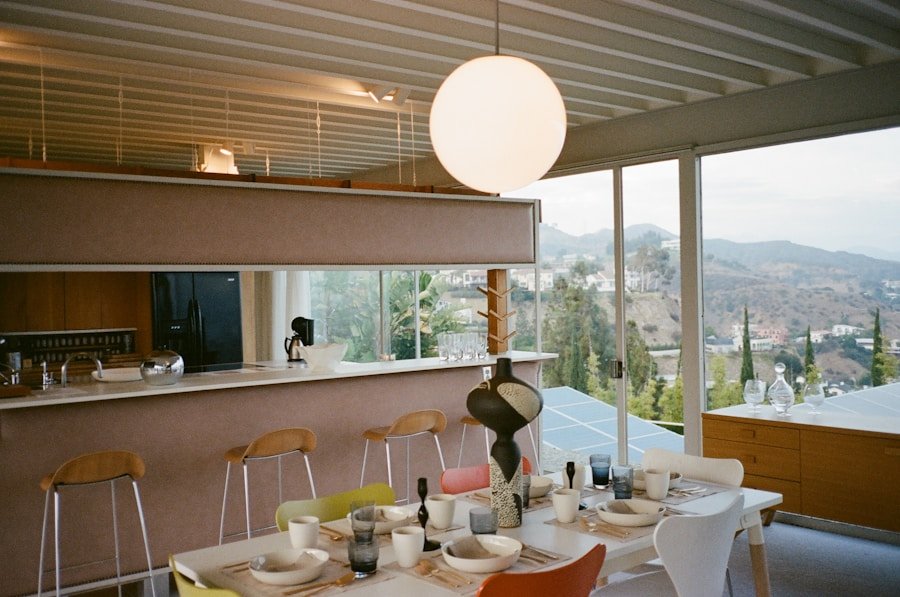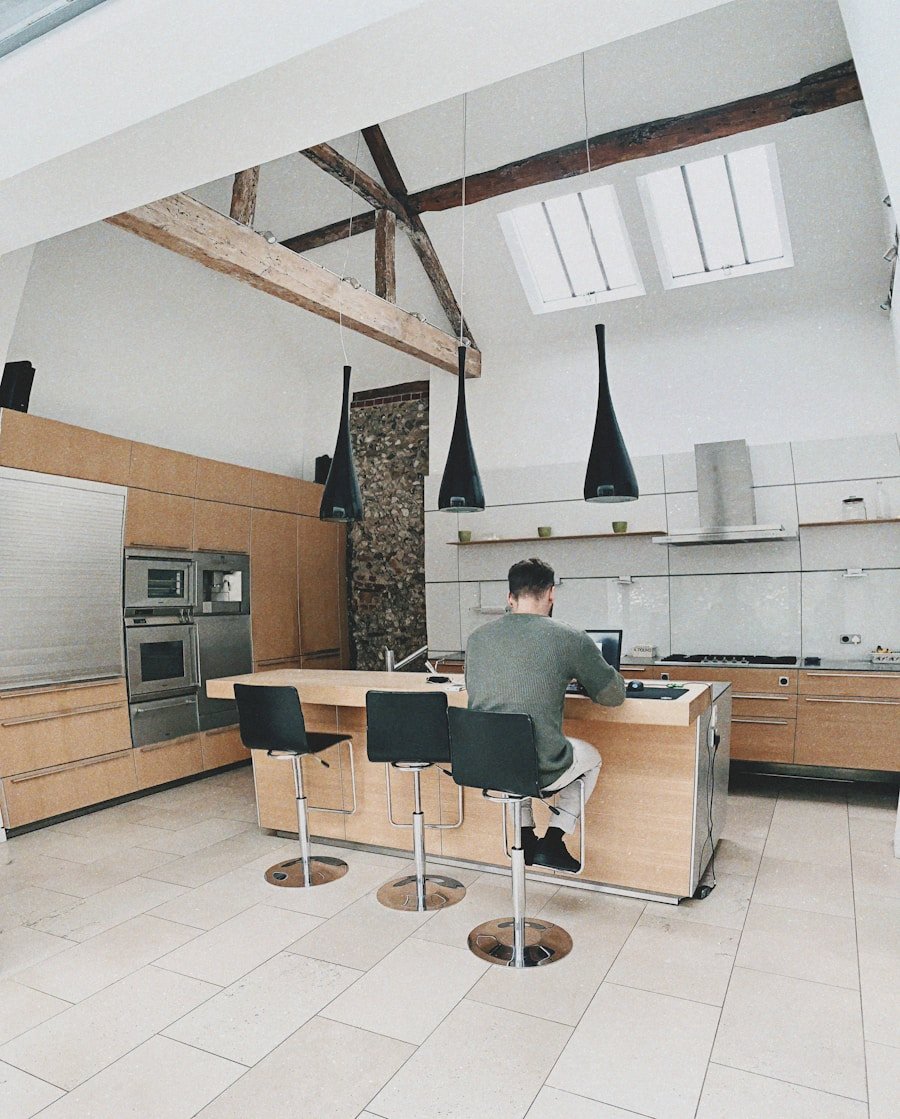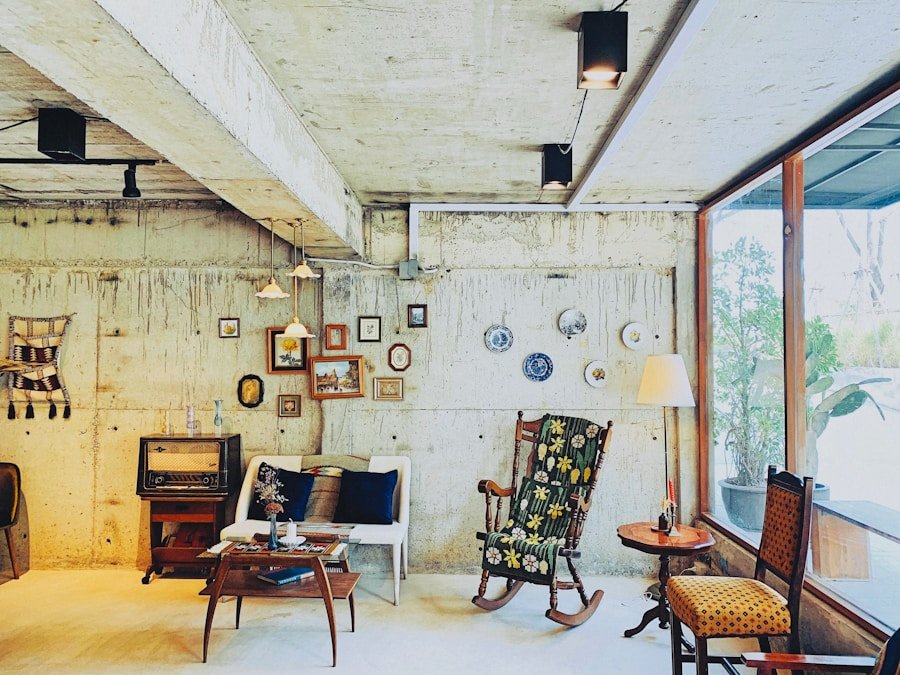This post may contain affiliate links. When you purchase through links on our site, we may earn an affiliate commission.
As I delve into the world of modernist home decor, I find myself captivated by its unique blend of simplicity and sophistication. Modernism emerged in the early 20th century as a response to the ornate styles of the past, emphasizing functionality and the beauty of form. This design philosophy encourages a departure from traditional aesthetics, favoring clean lines, open spaces, and a focus on the essentials.
I appreciate how modernist decor reflects a cultural shift towards innovation and progress, mirroring the rapid changes in society during that era. In my exploration of modernist home decor, I have come to understand that it is not merely about aesthetics; it is a lifestyle choice that promotes clarity and purpose. The principles of modernism resonate with me, as they advocate for a harmonious relationship between the individual and their environment.
By stripping away unnecessary embellishments, modernist design allows for a more profound appreciation of space and light. I find that this approach not only enhances the visual appeal of a home but also fosters a sense of tranquility and balance in my living environment.
Key Takeaways
- Modernist home decor emphasizes simplicity, functionality, and clean lines.
- Incorporate geometric shapes and clean lines in furniture and decor for a modernist look.
- Embrace minimalism by decluttering and focusing on functional pieces in your home decor.
- Utilize industrial materials and finishes such as metal, concrete, and exposed brick for a modernist aesthetic.
- Explore neutral color palettes with bold accents to create a modernist look in your home.
Incorporating Clean Lines and Geometric Shapes
Clean Lines and Clarity
One of the hallmarks of modernist decor is the emphasis on clean lines and geometric shapes. As I consider how to incorporate these elements into my own space, I am drawn to the idea of creating a streamlined aesthetic that feels both contemporary and timeless. Clean lines evoke a sense of order and clarity, which I find particularly appealing in today’s fast-paced world.
Creating a Sense of Serenity
By choosing furniture and decor items that feature straight edges and simple forms, I can cultivate an atmosphere that feels organized and serene. Geometric shapes play a crucial role in modernist design, adding visual interest without overwhelming the senses. I enjoy experimenting with various shapes—triangles, circles, and squares—through furniture arrangements, artwork, and decorative accents.
Bringing it all Together
For instance, I might select a coffee table with a sleek rectangular form or opt for wall art that features bold geometric patterns. These choices not only enhance the overall aesthetic but also create a dynamic interplay between different elements in my home. The result is a space that feels cohesive yet vibrant, inviting me to engage with my surroundings in new ways.
Embracing Minimalism and Functionality

Minimalism is at the core of modernist home decor, and I find this principle particularly liberating. By embracing minimalism, I can focus on what truly matters in my living space—functionality and purpose. This approach encourages me to evaluate each item in my home critically, ensuring that everything serves a specific function or brings me joy.
Architectural Digest As I declutter my space, I discover that less truly can be more; each piece I choose to keep has significance and contributes to the overall harmony of my environment. Functionality is another key aspect of modernist design that resonates with me. In my quest for a well-designed home, I prioritize pieces that are not only aesthetically pleasing but also practical.
For example, I might select furniture that offers hidden storage solutions or multi-functional items that adapt to my needs. This focus on utility allows me to create a space that is both beautiful and livable, where every element serves a purpose. By marrying minimalism with functionality, I can cultivate an environment that supports my lifestyle while reflecting my personal style.
Utilizing Industrial Materials and Finishes
| Material/Finish | Usage | Advantages | Disadvantages |
|---|---|---|---|
| Steel | Structural components, cladding | High strength, durability | Corrosion, heavy |
| Concrete | Foundations, walls, floors | Durable, fire resistant | Heavy, requires formwork |
| Aluminum | Cladding, windows, doors | Lightweight, corrosion resistant | Higher cost, lower strength |
| Wood | Flooring, cabinetry, furniture | Natural, aesthetic appeal | Prone to rot, fire hazard |
Incorporating industrial materials and finishes into my home decor has become an exciting aspect of my modernist journey. The raw beauty of materials such as metal, concrete, and wood adds an authentic touch to my space, creating a striking contrast with softer elements like textiles and plants. I appreciate how these materials evoke a sense of urban sophistication while remaining grounded in nature.
By blending industrial finishes with modernist design principles, I can achieve a look that feels both edgy and inviting. I often find myself drawn to exposed brick walls or concrete floors as they provide an excellent backdrop for modernist decor. These elements not only add character but also enhance the overall aesthetic by introducing texture and depth.
Additionally, I enjoy incorporating metal accents—such as light fixtures or furniture legs—that bring an industrial edge to my space. The interplay between these materials creates a dynamic environment that feels both contemporary and timeless, allowing me to express my individuality while embracing the essence of modernism.
Exploring Neutral Color Palettes and Bold Accents
As I navigate the world of color in modernist home decor, I am increasingly drawn to neutral color palettes complemented by bold accents. Neutral tones—such as whites, grays, and beiges—create a serene foundation for my space, allowing me to cultivate an atmosphere of calmness and clarity. These colors serve as a blank canvas upon which I can layer textures and patterns, creating visual interest without overwhelming the senses.
To infuse personality into my neutral palette, I love incorporating bold accents through accessories like cushions, artwork, or statement furniture pieces. A vibrant pop of color can transform an otherwise subdued space into something lively and engaging. For instance, I might choose a bright yellow chair or a striking piece of abstract art to serve as a focal point in the room.
This balance between neutrality and boldness allows me to express my creativity while maintaining the clean lines and simplicity characteristic of modernist design.
Incorporating Iconic Modernist Furniture and Lighting

In my quest for modernist home decor, I have developed an appreciation for iconic furniture pieces that embody the principles of this design movement. Mid-century modern furniture—characterized by its organic forms and functional designs—has become a staple in my home. From Eames chairs to Noguchi tables, these pieces not only serve as functional items but also as works of art that elevate my living space.
Lighting is another crucial element in modernist decor that deserves careful consideration. I find myself drawn to sculptural light fixtures that make a statement while providing illumination. Pendant lights with clean lines or floor lamps with geometric shapes can enhance the overall aesthetic while serving their primary function.
By selecting lighting that complements my furniture choices, I can create a cohesive look that embodies the spirit of modernism while ensuring my space remains well-lit and inviting.
Creating an Open and Airy Space
One of the defining characteristics of modernist design is the emphasis on open spaces that promote airflow and natural light. As I work to create an open and airy environment in my home, I focus on removing barriers—both physical and visual—that can hinder the flow of energy within the space. This often involves rethinking furniture arrangements or opting for transparent materials like glass to create a sense of continuity between different areas.
I also prioritize large windows or glass doors that invite natural light into my home. The interplay between light and shadow adds depth to my decor while enhancing the overall ambiance. By keeping window treatments minimal or opting for sheer fabrics, I can maximize the amount of sunlight that enters my space.
This connection to the outdoors fosters a sense of tranquility and well-being, allowing me to fully embrace the principles of modernism in my living environment.
Embracing Modernist Art and Sculpture
Finally, as I immerse myself in modernist home decor, I recognize the importance of incorporating art and sculpture into my space. Modernist art—characterized by its abstract forms and innovative techniques—can serve as a powerful focal point within my home. By selecting pieces that resonate with me personally, I can create an environment that reflects my tastes while celebrating the creativity inherent in modernism.
Sculptural elements also play a significant role in enhancing my decor. Whether it’s a striking sculpture on a pedestal or wall-mounted art that draws the eye upward, these pieces add dimension and intrigue to my space. I enjoy curating a collection of art that speaks to me—each piece telling its own story while contributing to the overall narrative of my home.
By embracing modernist art and sculpture, I can create an environment that inspires creativity and fosters a deep appreciation for the beauty of design. In conclusion, exploring modernist home decor has been an enriching journey for me—a journey marked by an appreciation for simplicity, functionality, and artistic expression. By understanding its principles and incorporating key elements such as clean lines, industrial materials, neutral palettes, iconic furniture, open spaces, and artful accents, I have been able to create a living environment that resonates with my personal style while embodying the essence of modernism.
Each choice I make reflects not only my aesthetic preferences but also my desire for a harmonious relationship with my surroundings—a true testament to the enduring appeal of modernist design.
If you are looking to embrace the warmth and coziness of modernist home decor, you may want to check out this article on creating a cozy haven. This article provides tips and inspiration on how to transform your space into a warm and inviting sanctuary. Whether you are looking to renovate a room or simply add some cozy touches to your home decor, this article has you covered. For more home decor ideas and inspiration, be sure to visit A to Z Cozy Corner.
FAQs
What is modernist home decor?
Modernist home decor refers to a design style that emerged in the early 20th century, characterized by clean lines, minimalism, and a focus on function over form. It often incorporates elements of industrial materials, open floor plans, and a lack of ornamentation.
What are the key features of modernist home decor?
Key features of modernist home decor include open floor plans, large windows to bring in natural light, minimalistic furniture and decor, use of industrial materials such as concrete and steel, and a focus on functionality and simplicity.
How can I incorporate modernist home decor into my own home?
To incorporate modernist home decor into your own home, consider using neutral color palettes, incorporating clean lines and geometric shapes in furniture and decor, utilizing natural materials such as wood and stone, and minimizing clutter to create a sense of openness and simplicity.
What are some popular furniture pieces in modernist home decor?
Popular furniture pieces in modernist home decor include mid-century modern sofas and chairs, sleek and minimalistic dining tables, modular shelving units, and statement lighting fixtures with clean lines and geometric shapes.
What are some common misconceptions about modernist home decor?
One common misconception about modernist home decor is that it is cold and sterile. In reality, modernist design can create a warm and inviting atmosphere through the use of natural materials, cozy textiles, and thoughtful lighting. Another misconception is that modernist decor is only suitable for large, minimalist spaces, when in fact it can be adapted to fit a variety of home sizes and styles.

 using WordPress and
using WordPress and 
No responses yet